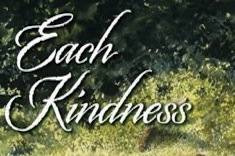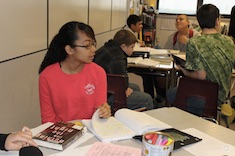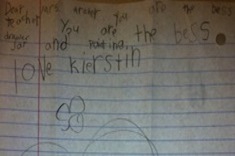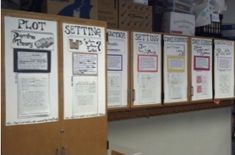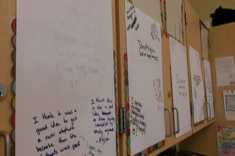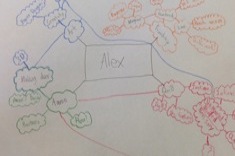Articles
Here is where you’ll find all the latest print features from our contributors. If you’d like to browse specifically by grade level, topic, or contributor, you can use the links in the right sidebar.
Latest Content
30 Books in 30 Days
Justin Stygles uses the 30 Books in 30 Days project to introduce his sixth graders to a wide variety of authors and genres.
Tutoring Ruth: Designing an Assessment
Max Brand continues his new tutoring series. In this installment, he designs a creative intake assessment for Ruth, a first grader who struggles with following directions.
Character Through Literature Early in the Year
Katherine Sokolowski finds that the beginning of the year is the best time to build community with a unit on character and morals through literature.
Planning for Instruction: Sea Glass
Karen Terlecky uses sea glass as a metaphor for the assessments she completes to launch the year, and data analysis all year long.
The Rapid Reader: Tutoring Esther
Max works with Esther, a third grader who takes pride in being a rapid reader and rarely pauses to make sense of the text.
Giving Up Television
Gretchen Taylor finds giving up television enables her to reconsider many habitual behaviors.
Many Possibilities for Student Podcasting
Katherine Sokolowski shares how she has integrated podcasting into her 5th grade classroom.
Animal Backpacks and Literacy Joy
Kelly Petrin finds animal backpacks are a wonderful tool for building literacy skills in young learners, as well as the home/school connection.
Kindergarten Moments Count: Morning Message
Keri Archer writes about the importance of morning message for kindergartners.
Before and After Pictures: Documenting Progress
Shari Frost finds before and after “snapshots” are a wonderful way to celebrate learning and get closure at the end of the school year.
Odd Habits
Mary Lee Hahn surveys Choice Literacy contributors about Odd Habits as they share truths and lies about their writing routines. This is a fun icebreaker for summer or fall orientation get-togethers.
Personal Listening Devices in Workshops
Justin Stygles finds that a ban on personal listening devices may not be the best option for students who are easily distracted. He explains how he designed a policy that allows students to listen to music of their choice during literacy workshops.
The Information Board: Celebrating Nonfiction Every Day
Andrea Smith builds interest in nonfiction in her fourth-grade classroom community through her constantly changing Information Board.
Habits That Maximize Time
Stella Villalba writes about the importance early in the year of building habits with students that maximize time for English language learners.
A Booklist for Memorial Day
Sarah Klim’s latest booklist includes titles for honoring those who serve on Memorial Day.
Nonfiction Book Blitz
Justin Stygles finds a nonfiction book blitz is the perfect unit for closing out the school year.
Final Literacy Contracts: Student-Generated Themes
Megan Ginther and Holly Mueller close out the year with their final literacy contracts. It’s time for students to take ownership of their learning, so they select the themes.
Capturing the Elementary Years with Photo Essays
Justin Stygles helps his sixth graders prepare to move to middle school with a photo essay assignment in the last weeks of school.
A Case of the Perennial Annuals
Suzy Kaback remembers saying goodbye to her first group of students as a young teacher.
The Habit of Budding
This new poem and reflection from Shirl McPhillips that delights in wordplay and emergent greenery in the spring.
Ending Reading Workshop by Planning for September
Clare Landrigan and Tammy Mulligan find that a little effort at the end of the school year pays big dividends when launching workshops in the fall.
Love the One(s) You’re With
Gretchen Taylor explains why it’s important to get less “judgy” of the colleagues around us.
Reader Response Anchor Charts
Christopher Carlson describes why and how he made reader response anchor charts more rigorous and thoughtful in his fifth-grade classroom.
The Data Wall Debacle
Shari Frost has a suggestion for what shouldn’t be on classroom walls: student assessment scores. She explains why this practice can be harmful to students.
Nonfiction Graffiti Walls
Katie Doherty uses nonfiction graffiti walls as a tool for building response skills and community with her sixth-grade students.
Student Work Ethic: Overcoming Spring Fever
Katherine Sokolowski finds the work ethic of her fifth-grade students is flagging by spring, so she helps them reflect upon and improve their performance.
Supporting Struggling Readers: David’s Story
Katie DiCesare has wise advice for helping readers who are falling behind their peers but don't qualify for additional services.
Understanding the Summer Slide: Sharing Data with Parents and Students
Clare Landrigan and Tammy Mulligan explain why it is important to share data with parents while school is still in session in order to avoid the summer slide. This is another installment in their summer reading series.
Getting Ready for Summer Reading: A Lesson Cycle
Franki Sibberson designs a lesson cycle to prepare students for summer reading.
The Gifts of Literacy
Kelly Petrin reflects on what she values most in the final days with children in her preschool program, and what she shares with parents.
Browse Content By
Type
Category
- Assessment Tools
- Big Fresh Archives
- Booklists
- Choice Numeracy
- Classroom Design
- Common Core
- Community Building
- Conferring
- Content Literacy
- Digital Literacy
- English Language Learners
- Equity
- Family Relations
- Free Samples
- Guiding Groups
- Leadership
- Literacy Coaches
- Mentor Texts
- Minilessons
- New Teacher Mentors
- Podcasts
- Poetry
- Quote Collections
- Reading Strategies
- Self Care
- Struggling and Striving Learners
- Talking and Listening
- Teacher Study Groups
- Teaching Reading
- Teaching Writing
- Word Study and Vocabulary
Author
- Melissa Quimby
- Nawal Qarooni
- Gwen Blumberg
- Julie Cox
- The Lead Learners
- Hannah Tills
- Josie Stewart
- Ruth Metcalfe
- Mallory Messenger
- Becca Burk
- Jodie Bailey
- Vivian Chen
- Mary Brower
- Tiffany Abbott Fuller
- Stephanie Affinito
- Ruth Ayres
- Leigh Anne Eck
- Heather Fisher
- Shari Frost
- Julie Johnson
- Suzy Kaback
- Gigi McAllister
- Shirl McPhillips
- Melanie Meehan
- Cathy Mere
- Debbie Miller
- Tara Barnett and Kate Mills
- Tammy Mulligan
- Dana Murphy
- Bitsy Parks
- David Pittman
- Brenda Power
- Heather Rader
- Matt Renwick
- Mandy Robek
- Christy Rush-Levine
- Gretchen Schroeder
- Jen Schwanke
- Brian Sepe
- Katherine Sokolowski
- Stella Villalba
- Jennifer Vincent
Grade Level
Choice Literacy Membership
Articles
Get full access to all Choice Literacy article content
Videos
Get full access to all Choice Literacy video content
Courses
Access Choice Literacy course curriculum and training



